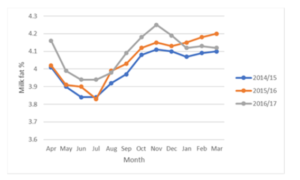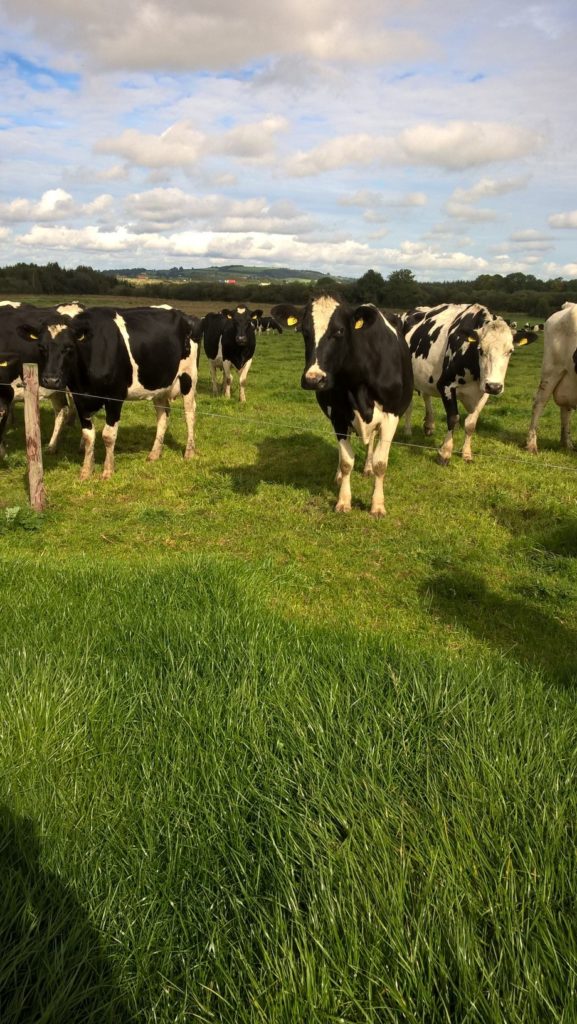Spring is around the corner, are you ready for turnout?
15 February 2022It’s never too early to start planning for spring turnout; the evenings have started to get lighter and turnout will soon be upon us. Planning the transition from grass silage-based rations to grazing can help ensure that the change in diet is smooth and decreases the chance of disruption to cow health and performance.
An important consideration in planning turnout is the nutritional differences between grass silage and spring grass. If the transition is not managed carefully, there may be potential issues with digestion and lowered milk production. Grass tends to have higher levels of sugar than grass silage, as well as lower dry matter and fibre levels. The rumen microbes which digest fibre require time to adjust to the lower levels of fibre found in grass and it takes the rumen bugs around three weeks to adjust to changes in the diet. Therefore, taking time to gradually increase the time spent grazing will aid these microbes in adjusting to the diet.
Fibre levels are lower in spring grass due to the higher proportion of leaf to stem which results in the lack of “scratch factor”. The “scratch factor” is important in saliva production and cudding rates; the number of times that a cow chews each cud with the optimum being 65 to 75 chews per cud. Therefore, with the lower levels of structural fibre in the grass, the cows’ cudding rates and saliva production may decrease which can impact rumen function and milk production.
During the spring, the dry matter of fresh grass can vary significantly on a day-to-day basis due to environmental factors and this variation can impact the dry matter intake of the cow. Similarly, the weather can impact the sugar levels within the grass, reaching up to 18% when it is sunny and dry. Crude protein levels can also vary depending on fertiliser application, including the quantity applied and when the application occurred. The protein available is mainly rumen degradable protein (RDP), which will be digested by the rumen microbes with any excess protein broken down into ammonia, which will enter the blood stream to be converted into urea in the liver. Following turnout, milk urea levels may increase, and it is important to monitor these levels. When a cow is fed a balanced diet, milk urea levels should be around 250 mg/l or 0.025%. When levels increase above 300 mg/l or 0.03% action should be considered to reduce them back down to the target. Buffer feeding using high energy, lower protein forages or concentrates can help with rebalancing the diet, these high energy feeds include maize or wholecrop silages, soya hulls or high fibre cakes. Including high fibre feeds in the diet during turnout will help maintain the butterfat levels as well.
At the start of the turnout period, it is vital to watch out for any changes in behaviour or milk constituents, particular butterfat as seen in Figure 1, as these could be indicators of digestive upsets like sub-acute ruminal acidosis (SARA). If the rumen pH falls below 5.8 – 6.2 for a period of 2 – 3 hours or more, then the cow may start to show signs of SARA. When the pH falls below optimal levels, the fibre digesting microbes will have reduced activity, which results in less fibre being digested and reduces the utilisation of grass by the cow. To reduce the risk of SARA, introducing fresh grass into the diet should be done over the course of a week by gradually increasing the amount of time each day that the cows spend grazing.
Figure 1. Seasonal variation of milk fat % in UK dairy herds
Source: AHDB Dairy
A gradual transition from grass silage-based rations to fresh spring grass will aid the cows to slowly adapt to the change in diet and buffer feeding can be an easy way to supplement the cows with starch-based forages such as maize or wholecrop silages that provide fermentable energy in the rumen which improves the use of nitrogen and protein synthesis by the microbes in the rumen. Utilising buffer feeding during the transition period to full turnout will maximise dry matter intakes and reduce the potential impacts on cow performance and milk production.
Sign up to the FAS newsletter
Receive updates on news, events and publications from Scotland’s Farm Advisory Service


